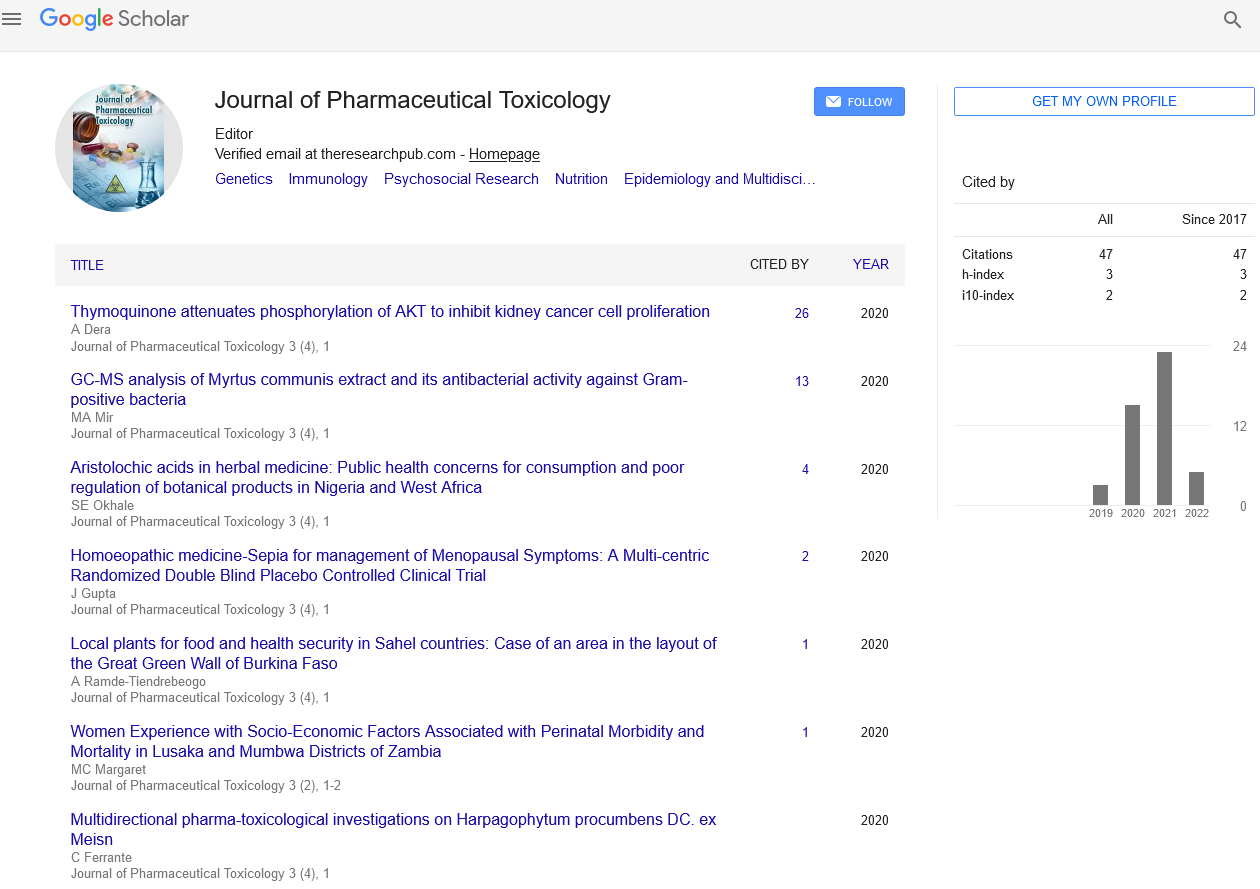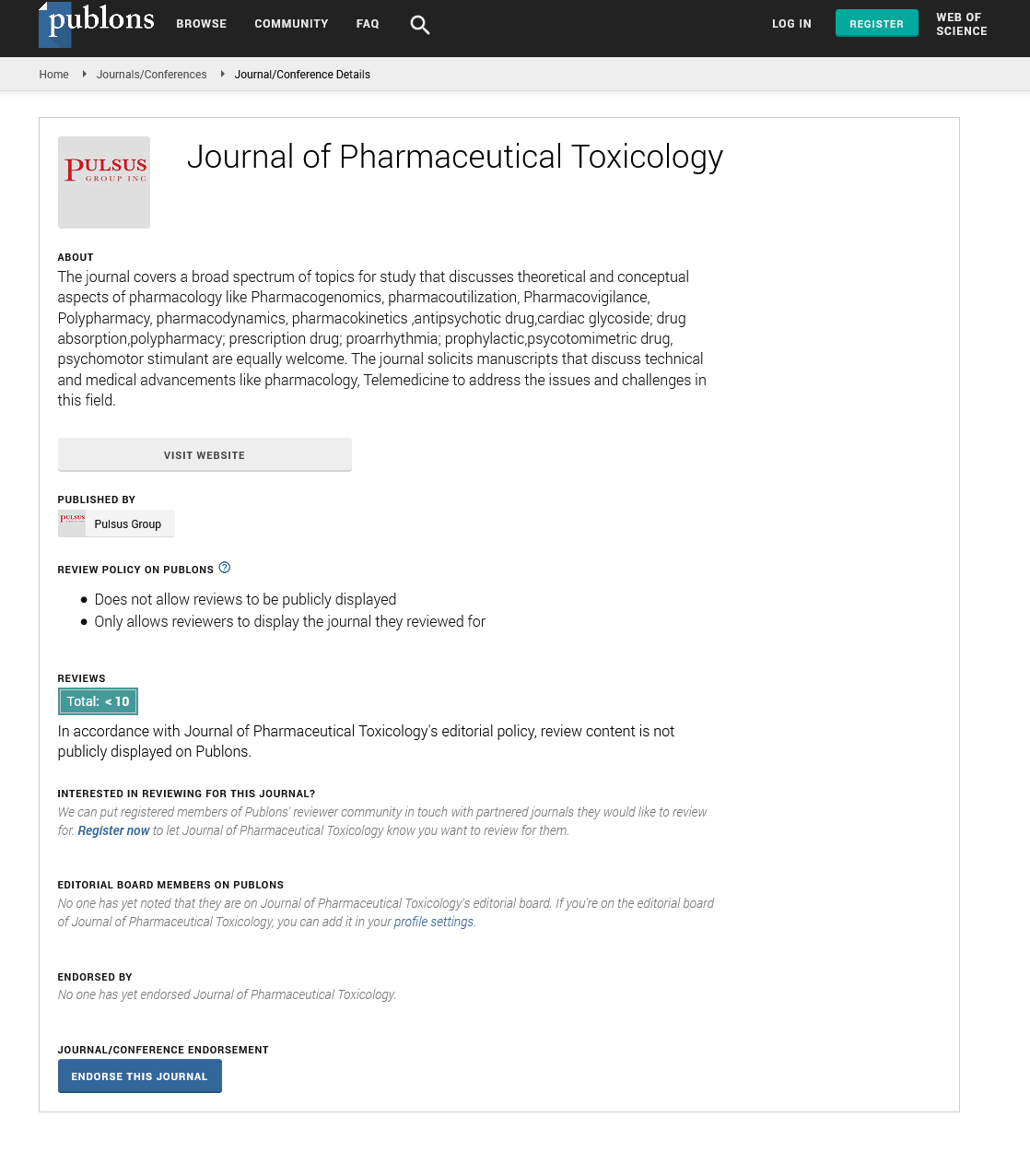Commentary - Journal of Pharmaceutical Toxicology (2022) Volume 5, Issue 3
STEM Learning for Young Children: A Systematic Literature Review.
Yaoying Xuz*
Department of Counseling and Special Education, Virginia Commonwealth University.
Received: 02-Jun-2022, Manuscript No. jpt-22-29849; Editor assigned: 06-Jun-2022, PreQC No. jpt-22-29849 (PQ); Reviewed: 20-Jun-2022, QC No. jpt-22-29849; Revised: 23-Jun- 2022, Manuscript No. jpt-22-29849 (R); Published: 30-Jun-2022, DOI: 10.37532/jpt.2022.5(3).50-51
Abstract
Studies show that children spend considerable time engaged in informal learning outside of educational settings. Informal educational settings such as museums can provide a variety of opportunities to engage children in STEM learning and scientific discovery, which can increase school readiness. Research has also determined an achievement gap in students from low socio-economic backgrounds and in students who are dual language learners. The literature shows that this gap begins even before children enter formal schooling. This systematic review serves two purposes: to explore the impact of informal STEM learning (ISL) on school readiness and to examine the relationship between ISL and children’s social-emotional development, particularly in children who are dual language learners. Using PRISMA procedures, we identified 36 eligible studies in this systematic review. The findings illuminate the important role of parents and/or caregivers and the quality of design and interventions used at ISL si
Keywords
Informal STEM • dual language learners • school readiness • social/ emotional development • social/emotional learning
Introduction
Preschool children spend more than 80% of their waking hours engaging in informal learning experiences outside of school settings Informal educational settings such as museums provide a variety of opportunities to engage children in STEM learning and scientific discovery Researchers have also found that participation in informal science activities fosters children’s abilities of scientific reasoning and increases their commitment to science learning. Among children who are dual language learners (DLL), meaning students for whom English is not their primary language, 48% were considered unprepared when entering kindergarten [1]. Data also show that children who enter kindergarten behind rarely catch up; instead, the achievement gap tends to widen over time particularly for children who are from culturally and/or linguistically.
Methods
Hole readiness, and more specifically on children’s social-emotional learning. The databases used in the search included ERIC (Education Resources Information Center), All Pro Quest, Education Research Complete and Psycho Info (American Psychological Association). In order to ascertain the strongest query terms, an initial search was undertaken in the varying databases using synonyms for the words preschool, school readiness, informal learning, and the “STEM” acronym and related terms. A title and abstract scan of each article on the first page of the results that these initial searches brought about were scanned for relevance. Additionally, the lists of keywords were examined to determine which synonyms of the search concepts came up most frequently. As a result of the synonym and keyword searches, the final search string included the following terms: preschooler, preschool children, preschool kid, pre-school children, young child, and school readiness [2]. Due to the complexity of the STEM acronym in terms of its breadth and the need for the studies to be specific to informal settings, it was determined that the best approach for capturing the five STEM components and/or any combination of the components and informal learning was to use an adjacency string.
Result
Characteristics of ISL Research the participant demographics, research design, and findings of the studies used in this review are summarized in respectively. Of the studies included in this review, used quantitative methods, used qualitative methods, and used a mixed methods approach. Among the studies that used quantitative methods, there was wide variation in the number of participants ranging. The studies that used qualitative methods had a range in number of participants. Three of the qualitative studies had only one participant while the largest sample in the qualitative studies had participants [3].The studies that implemented a mixed methods approach ranged in the number of participants from. Sixteen of the reviewed studies used children as the unit of analysis. Seventeen studies used another common unit of analysis, caregiver and child. Four of the studies used educator and child as the units of analysis, and two studies used only the caregiver as the unit of analysis.
Description
There were some commonalities among the research questions in the studies that were reviewed. Although some of the research questions that surfaced were outliers, three main inquiry themes emerged from the coding system of included articles: parent/ child STEM interactions at home, parent/ child/staff interactions at ISLS and their impact on STEM learning, or more specifically their impact on school readiness, and if and how ISL impacts children’s social emotional learning. Questions around the first theme of parental involvement in STEM activities at home arose several times. These questions addressed whether parents’ talk related to a child’s early STEM literacy, the relationship between a child’s STEM interest and / or identity and STEM opportunities at home, and how playful contexts contribute to children’s development of STEM concepts [4]. While ISL contributes to children’s overall development and learning, additional research is needed to explore its specific impact on children’s school readiness, particularly children from culturally and linguistically diverse backgrounds. In relationship to the inquiry theme of caregiver/child interactions at home and at ILS and the findings that demonstrate the importance of such interactions, there is obviously a disconnection between what is available to support children and their families who have access to resources and what is missing for children and families who are under-resourced, which ironically but not surprisingly confirms the achievement gap that has been persistent for decades.
Conclusions
The intended contribution of this study is to influence research on informal STEM learning to better prepare students for formal schooling for the purpose of reducing the achievement gap of students who are DLLs. This systematic review confirms the importance of informal learning for children’s STEM knowledge and skills development, as supported by the existing literature [5]. The current study further identified the critical role of family involvement in children’s STEM knowledge and skills development, which leads to school readiness and future success.
Acknowledgement
None
Conflict of Interest
No conflict of interest
References
- Kornelaki AC, Plakitsi K, Thunderbolt Hunt et al. Educational Program for Students from 5 to 9 Years Old in the Archaeological Museum of Ioannina. World J. Educ. 8, 87–101(2018).
- Bell P, Lewnstein B, Shouse AW et al. Learning Science in Informal Environments: People, Places, and Pursuits; National Research Council, Ed.; National Academies Press: Washington, DC, USA, 2009.
- Falk JH, Dierking LD. The 95 percent solution. Am. Sci.98, 486–493 (2010).
- Osborne J, Dillon J. Research on learning in informal contexts: Advancing the field? Int. J. Sci. Educ.29, 1441–1445(2007).
- Stevens R. Introduction: What counts as math and science? In LOST Opportunities: Learning in Out-of-School Time, Bevan B, Stevens R, Bell P, Razfar A, Eds. Springer: London, UK, 3–6(2013).
Indexed at, Google Scholar, Crossref
Indexed at, Google Scholar, cross ref
Indexed at, Google Scholar, Crossref
Indexed at, Google Scholar, Crossref


